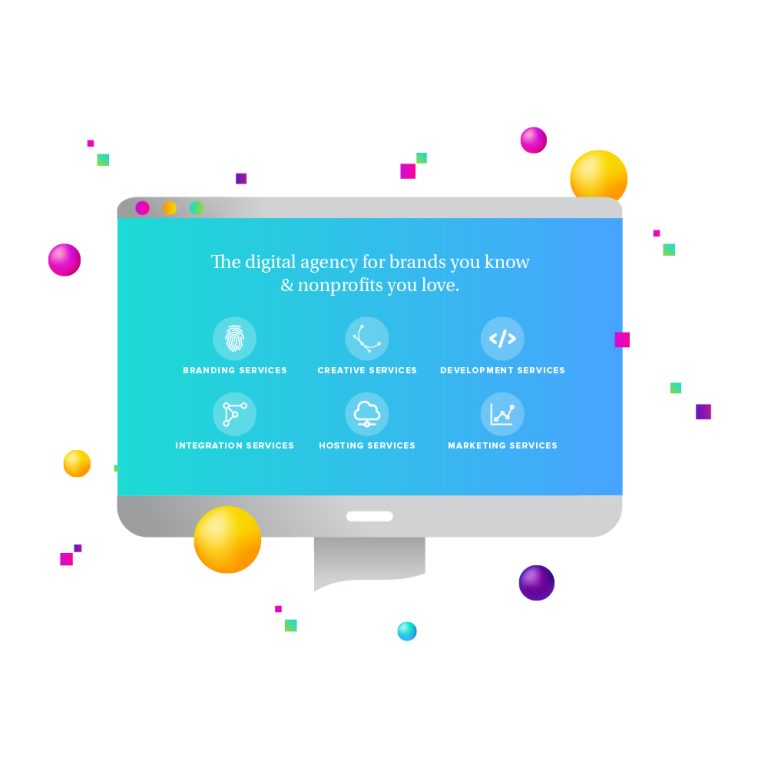
In a world where the majority of consumers are glued to their smartphones, mobile marketing has emerged as a crucial strategy for businesses aiming to engage customers directly and personally. Mobile devices, particularly smartphones, are not only communication tools but also powerful platforms for commerce, information, and entertainment. Among the various tactics in mobile marketing, SMS marketing (Short Message Service) has proven to be one of the most effective methods.
1. Understanding SMS Marketing
Definition and Scope
SMS marketing involves sending text messages to customers with the goal of communicating offers, updates, reminders, or other relevant information. Unlike email or social media marketing, SMS marketing is characterized by its immediacy and high engagement rates. It’s a direct line to your customers, bypassing the noise of crowded email inboxes or social media feeds. SMS messages are typically short, concise, and designed to prompt immediate action, whether it’s visiting a website, redeeming a discount code, or simply staying informed.
The scope of SMS marketing is broad, ranging from promotional campaigns that boost sales, to transactional messages that confirm purchases or appointments, to informational alerts that keep customers updated on critical information. This versatility makes SMS marketing an indispensable tool in any marketer’s toolkit.
Key Benefits
SMS marketing offers several unique advantages that make it stand out among other forms of digital marketing:
- High Open Rates: SMS messages boast an open rate of over 98%, with the vast majority of messages being read within three minutes of receipt. This contrasts sharply with email open rates, which typically hover around 20%.
- Immediacy: The instant nature of SMS makes it ideal for time-sensitive messages, such as flash sales, limited-time offers, or urgent notifications.
- Personalization: SMS allows for a high degree of personalization, making it possible to tailor messages to individual preferences and behaviors, thus increasing relevance and engagement.
- Direct Communication: SMS is a direct communication channel, meaning it doesn’t rely on algorithms to reach customers. If a customer is on your SMS list, your message will reach them, plain and simple.
- Cost-Effective: Despite its high engagement rates, SMS marketing is relatively low-cost, especially when compared to traditional advertising channels.
2. Building an SMS Marketing Strategy
Setting Objectives
The foundation of any successful marketing campaign is clear and well-defined objectives. When it comes to SMS marketing, your objectives might vary depending on your business goals. Some common objectives include:
- Increasing Sales: Use SMS to send exclusive offers, discounts, and promotions that drive immediate purchases.
- Customer Retention: Keep your existing customers engaged with personalized messages, loyalty rewards, and special offers.
- Driving Traffic: Encourage recipients to visit your website, physical store, or app with tailored incentives and calls-to-action.
- Promoting Events: Use SMS to promote webinars, product launches, or in-store events, ensuring high attendance rates.
- Enhancing Customer Experience: Improve customer satisfaction by sending timely updates, appointment reminders, or feedback requests.
Once your objectives are set, they will guide your entire strategy, from crafting messages to choosing metrics for success.
Audience Segmentation
Audience segmentation is a critical component of effective SMS marketing. By dividing your audience into distinct groups based on shared characteristics, you can create more targeted and relevant messages. Here’s how you can approach segmentation:
- Demographics: Segment your audience based on age, gender, location, and other demographic factors. For example, a retail store might send different promotions to customers in different regions based on local events or holidays.
- Behavioral Segmentation: Group customers based on their past behavior, such as purchase history, website activity, or engagement with previous SMS campaigns. This allows for highly personalized messaging that resonates with the recipient’s interests.
- Psychographic Segmentation: Consider your customers’ values, lifestyles, and interests when segmenting your audience. For example, you might send health-related promotions to customers who frequently purchase wellness products.
- Purchase Cycle: Tailor messages according to where the customer is in their buying journey. For instance, new customers might receive a welcome message with a discount, while repeat customers might be offered a loyalty reward.
Proper segmentation not only increases the relevance of your messages but also enhances customer satisfaction and loyalty, as customers feel that your brand truly understands their needs.
Choosing the Right Platform
The success of your SMS marketing efforts largely depends on the platform you choose. A good SMS marketing platform should offer a range of features that enable you to execute your strategy effectively. Here are some factors to consider when selecting a platform:
- Automation: Look for platforms that offer automation features, such as scheduling, drip campaigns, and automated responses. This allows you to send messages at the optimal time and scale your efforts without requiring constant manual input.
- Personalization: Choose a platform that supports personalization features, such as dynamic fields that can automatically insert the recipient’s name, purchase history, or other relevant data into the message.
- Analytics and Reporting: Detailed marketing analytics are crucial for tracking the performance of your campaigns. A good platform should provide insights into open rates, click-through rates, conversion rates, and more, allowing you to optimize your campaigns over time.
- Compliance Tools: Ensure the platform helps you stay compliant with regulations such as GDPR and TCPA, with features like opt-in management and easy opt-out options.
- Integration Capabilities: The platform should integrate seamlessly with your existing CRM, email marketing tools, and other marketing channels, allowing for a unified and coordinated approach.
- Scalability: As your business grows, your SMS marketing needs may change. Choose a platform that can scale with your business, offering advanced features and higher message volumes as required.
By carefully selecting a platform that meets these criteria, you can ensure that your SMS marketing campaigns are efficient, effective, and easy to manage.
3. SMS Marketing Best Practices
Opt-In Process
Obtaining explicit consent from customers before sending them SMS messages is not just a legal requirement—it’s also a best practice that builds trust and ensures higher engagement rates. Here’s how to create an effective opt-in process:
- Clear Value Proposition: When asking customers to opt-in, clearly communicate the benefits they will receive, such as exclusive offers, early access to sales, or important updates.
- Double Opt-In: Implement a double opt-in process where customers must confirm their subscription by replying to an initial message. This ensures that only genuinely interested customers join your list.
- Transparency: Be transparent about the type and frequency of messages subscribers can expect. For example, let them know they will receive 1-2 messages per week with special promotions and updates.
- Easy Opt-Out: Always provide a simple way for customers to opt-out, such as by replying with “STOP.” This not only keeps you compliant with regulations but also shows respect for your customers’ preferences.
- Capture Opt-Ins Across Multiple Channels: Offer multiple ways for customers to opt-in, such as through your website, social media, in-store sign-ups, or during the checkout process.
A well-designed opt-in process not only helps you build a high-quality subscriber list but also sets the stage for a successful SMS marketing campaign.
Personalization
Personalization is key to making your SMS messages stand out in a crowded inbox. By tailoring your messages to each recipient’s preferences and behaviors, you can significantly increase engagement rates. Here are some advanced personalization techniques:
- Use of Names: Addressing recipients by their name creates a sense of familiarity and personal connection. For example, start your message with “Hi [Name],” to instantly grab attention.
- Purchase History: Leverage data on past purchases to send personalized recommendations or follow-up messages. For example, if a customer recently bought a pair of shoes, you could send them a message about matching accessories or a similar product.
- Location-Based Personalization: Use geolocation data to send messages that are relevant to the recipient’s location. For instance, a restaurant chain could send a special offer to customers who are near one of their locations.
- Behavioral Triggers: Set up automated messages based on customer actions, such as browsing specific products on your website, abandoning a shopping cart, or engaging with a previous SMS campaign.
- Anniversaries and Birthdays: Sending personalized messages on special occasions, like a customer’s birthday or the anniversary of their first purchase, along with a special offer, can boost loyalty and sales.
Personalized SMS messages not only feel more relevant to the recipient but also increase the likelihood of them taking the desired action.
Timing Is Everything
The timing of your SMS messages can greatly influence their effectiveness. Sending messages at the right time can lead to higher open rates, better engagement, and more conversions. Consider the following when timing your messages:
- Time of Day: The optimal time to send an SMS message is typically mid-morning (around 10 AM) or early evening (around 6 PM), when people are likely to be on their phones but not too busy. However, this can vary depending on your audience. For example, if you’re targeting working professionals, you might find that lunch breaks or just after work hours are the best times to reach them.
- Day of the Week: Weekdays tend to perform better for SMS campaigns, with Tuesday through Thursday often yielding the highest engagement. Weekends can also be effective for certain industries, such as retail or entertainment, where customers may be more likely to act on promotions.
- Urgency and Relevance: Time-sensitive offers, such as flash sales or last-minute reminders, should be sent at times when recipients are most likely to act immediately. For instance, a restaurant could send a lunch special promotion at 11 AM, just as customers are starting to think about their midday meal.
- Frequency of Messages: While timing individual messages is important, so too is managing the overall frequency of your SMS campaigns. Sending too many messages can lead to fatigue and increased opt-outs, while too few might result in missed opportunities. Monitor customer responses and adjust your frequency accordingly.
Experimenting with different send times and closely monitoring the results can help you identify the optimal timing for your audience, maximizing the impact of your campaigns.
Clear and Compelling Content
Crafting the perfect SMS message is both an art and a science. Given the 160-character limit, every word must serve a purpose. Here’s how to create SMS content that captures attention and drives action:
- Strong Opening: Start your message with a compelling hook that grabs attention immediately. This could be an exciting offer, a time-sensitive alert, or a personalized greeting.
- Concise Messaging: Be direct and to the point. Your message should convey the most important information within the first sentence. Avoid unnecessary jargon or filler words.
- Clear Call-to-Action (CTA): The CTA is the most crucial part of your message. Whether it’s “Shop Now,” “Claim Your Discount,” or “Book Your Appointment,” make sure it’s clear, actionable, and easy to follow.
- Value Proposition: Clearly articulate the benefit to the customer. For example, instead of just saying “Get 20% off,” you might say “Enjoy 20% off your next purchase, just for being a valued customer.”
- Sense of Urgency: Creating a sense of urgency can drive quicker responses. Phrases like “Limited-time offer,” “Expires tonight,” or “Only a few left in stock” can prompt immediate action.
- Legal Disclosures: If applicable, include any necessary legal information or disclaimers, such as terms and conditions for a promotion.
Effective SMS content should be concise yet impactful, delivering value to the recipient and prompting them to take immediate action.
Frequency Management
Finding the right balance in the frequency of your SMS messages is essential for maintaining a positive relationship with your audience. Here’s how to manage frequency effectively:
- Start with a Baseline: Begin with one to two messages per week and monitor customer response. This provides a baseline that you can adjust based on engagement metrics such as open rates, click-through rates, and opt-outs.
- Segmented Frequency: Different customer segments may respond better to different frequencies. For example, highly engaged customers might appreciate more frequent updates, while less active customers may prefer fewer messages.
- Event-Based Messaging: Use event-based triggers, such as a customer’s birthday or an upcoming event, to send additional messages without overwhelming your audience.
- Seasonal Adjustments: During peak shopping seasons, such as holidays or sales events, you may increase the frequency of your messages to capitalize on heightened consumer activity. However, be sure to return to your regular frequency once the season ends.
- Monitoring and Adjusting: Continuously monitor your metrics and be ready to adjust your frequency as needed. If you notice a spike in opt-out rates or a drop in engagement, it might be time to reduce the number of messages you’re sending.
Proper frequency management ensures that your SMS marketing efforts remain effective and welcomed by your audience, rather than becoming a source of frustration.
Tracking and Analyzing Results
To maximize the effectiveness of your SMS marketing campaigns, it’s essential to track and analyze the performance of each campaign. This allows you to refine your strategies and improve future results. Here are some key metrics and analysis techniques:
- Open Rates: While open rates for SMS are typically high, tracking this metric can help you understand the effectiveness of your message timing and subject lines.
- Click-Through Rates (CTR): CTR measures how many recipients clicked on a link within your message. This metric is critical for evaluating the effectiveness of your CTAs and the relevance of your content.
- Conversion Rates: Conversion rates track how many recipients took the desired action, such as making a purchase, signing up for an event, or redeeming a coupon. This is perhaps the most important metric for measuring the success of your SMS campaigns.
- Opt-Out Rates: Monitor opt-out rates to gauge customer satisfaction with your messaging frequency and content. A high opt-out rate could indicate that you’re sending too many messages or that your content isn’t resonating with your audience.
- A/B Testing: Conduct A/B testing to compare different versions of your SMS messages. Test variables such as message content, CTA wording, send times, and personalization techniques to determine what works best.
- ROI Analysis: Calculate the return on investment (ROI) of your SMS campaigns by comparing the revenue generated by the campaigns against the costs involved. This will help you understand the financial impact of your SMS marketing efforts.
By regularly analyzing these metrics, you can make data-driven decisions that enhance the performance of your SMS marketing campaigns.
4. Legal Considerations and Compliance
Regulatory Overview
SMS marketing is subject to various legal regulations designed to protect consumers from unwanted communications. Non-compliance can result in hefty fines and damage to your brand’s reputation. Understanding these regulations is essential for running a compliant and successful SMS marketing campaign.
- Telephone Consumer Protection Act (TCPA): In the United States, the TCPA regulates telemarketing calls and the use of SMS for marketing purposes. Under TCPA, businesses must obtain prior express written consent from consumers before sending promotional SMS messages. Additionally, the act requires that businesses provide a clear and easy way for recipients to opt-out of future messages.
- General Data Protection Regulation (GDPR): In the European Union, the GDPR governs how businesses collect, store, and use personal data, including phone numbers. Under GDPR, businesses must obtain explicit consent before sending SMS messages and must provide a clear opt-out mechanism. GDPR also mandates that businesses protect customer data and notify users of any data breaches.
- Canada’s Anti-Spam Legislation (CASL): In Canada, CASL requires businesses to obtain consent from recipients before sending commercial electronic messages, including SMS. Businesses must also include clear identification information and an unsubscribe mechanism in each message.
Best Practices for Compliance
Ensuring compliance with legal regulations is not only a legal requirement but also a best practice for building trust with your customers. Here’s how to stay compliant:
- Obtain Explicit Consent: Implement a double opt-in process where customers confirm their subscription to your SMS list. This helps ensure that only those who genuinely want to receive your messages are added to your list.
- Provide Clear Opt-Out Instructions: Every message should include an easy way for recipients to unsubscribe, such as by replying with “STOP.” Ensure that opt-out requests are processed immediately to prevent future messages from being sent to those who have unsubscribed.
- Maintain Detailed Records: Keep detailed records of how and when you obtained consent from each recipient. This documentation can be crucial in the event of a legal dispute or audit.
- Regularly Review Your Practices: Regularly review your SMS marketing practices to ensure ongoing compliance with changing regulations. Stay informed about legal updates in the regions where you operate.
- Protect Customer Data: Implement robust data protection measures to safeguard customer information. This includes encrypting data, limiting access to authorized personnel, and regularly auditing your data security practices.
- Transparency: Be transparent about how you use customer data. Provide a clear privacy policy that explains what data you collect, how it’s used, and how customers can manage their preferences.
By adhering to these best practices, you can minimize legal risks and build trust with your audience, ensuring the long-term success of your SMS marketing efforts.
5. Integrating SMS with Other Marketing Channels
Omni-Channel Strategy
An omni-channel marketing strategy ensures that your messaging is consistent and cohesive across all channels, providing a seamless experience for your customers. Integrating SMS with other marketing channels, such as email, social media, and in-app notifications, can amplify your message and drive better results. Here’s how to effectively integrate SMS into your omni-channel strategy:
- Consistent Messaging: Ensure that your SMS messages align with your broader marketing campaigns. For example, if you’re running a holiday promotion, your SMS messages should complement your email, social media, and in-store messaging.
- Cross-Channel Promotion: Use SMS to promote other marketing channels and vice versa. For instance, you can send an SMS encouraging recipients to check their email for a special offer, or use email to invite subscribers to join your SMS list for exclusive updates.
- Sequential Messaging: Coordinate your SMS campaigns with other channels by using sequential messaging. For example, send an email announcing a new product launch, followed by an SMS reminder just before the launch date. This helps reinforce your message and increases the likelihood of customer engagement.
- Unified Customer Data: Integrate your SMS platform with your CRM and other marketing tools to maintain a unified view of each customer’s interactions across all channels. This allows you to deliver more personalized and relevant messaging based on a customer’s complete engagement history.
- Channel Preferences: Respect customer preferences by allowing them to choose their preferred communication channels. Some customers may prefer SMS for urgent updates but prefer email for more detailed information. Offering this flexibility can enhance the customer experience and improve engagement rates.
An omni-channel approach to SMS marketing ensures that your messaging is both consistent and effective, helping you create a seamless and engaging customer experience.
Cross-Promotion
Cross-promotion involves using one marketing channel to promote another, thereby increasing engagement across multiple platforms. Here’s how to effectively cross-promote your SMS marketing efforts:
- Promote SMS Sign-Ups on Social Media: Use your social media channels to encourage followers to join your SMS list. Offer incentives, such as exclusive discounts or early access to sales, to entice them to sign up.
- Leverage Email Marketing: Include a call-to-action in your email campaigns inviting subscribers to join your SMS list. Highlight the benefits of receiving SMS updates, such as real-time alerts and special offers.
- In-Store Sign-Ups: If you have a physical store, encourage customers to sign up for your SMS list at checkout. Offer a small incentive, such as a discount on their next purchase, to encourage sign-ups.
- Website Pop-Ups: Use website pop-ups or banners to promote your SMS list. Make it easy for visitors to sign up by keeping the form simple and highlighting the benefits of joining.
- Incorporate SMS into Loyalty Programs: If you have a loyalty program, use SMS to send exclusive rewards and updates to your most loyal customers. This not only adds value to your SMS list but also enhances customer loyalty.
Cross-promotion helps you grow your SMS subscriber list while ensuring that your audience is aware of the different ways they can engage with your brand.
At New Target, we understand that mastering SMS marketing requires more than just sending out messages—it requires a strategic approach that is tailored to your unique business goals and customer base. Our team of experts is here to help you navigate the complexities of SMS marketing, from developing targeted campaigns and ensuring regulatory compliance to integrating SMS with your other marketing channels for a cohesive strategy.
But we don’t stop at SMS. New Target is your comprehensive partner for all your marketing needs:
- Search Marketing: We help you optimize your presence on search engines through targeted SEO and paid search campaigns, ensuring your brand is visible to the right audience at the right time.
- Content Marketing: Our content marketing services are designed to engage and inform your audience with high-quality, relevant content that drives conversions and builds brand loyalty.
- Social Media Marketing: We create and manage social media campaigns that resonate with your audience, increase brand awareness, and foster community engagement across all major platforms.
With New Target, you get a full-service marketing partner that understands the intricacies of the digital landscape and is committed to helping your business succeed. Let us help you create a seamless and effective marketing strategy that leverages the power of SMS alongside search, content, and social marketing to achieve your business objectives.



